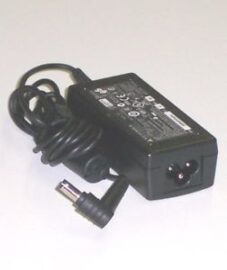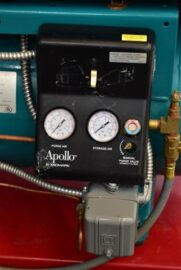How to Perform Net Realizable Value NRV Analysis by Dobromir Dikov, FCCA, FMVA Magnimetrics
Category : Bookkeeping

The NPV in this case is the amount owed minus the allowance for doubtful accounts. The allowance for doubtful accounts is a balance maintained to offset accounts receivable and is an estimate of how much of accounts receivable will not be collected at any given time. If this calculation does result in a loss, charge the loss to the cost of goods sold expense with a debit, and credit the inventory account to reduce the value of the inventory account. If the loss is material, you may want to segregate it in a separate loss account, which more easily draws the attention of a reader of a company’s financial statements.
- When NRV is lower than the carrying value of assets, asset adjustments are made that also affect the income statement, reducing profits.
- The final step in NRV analysis is to compare the NRV against the asset’s carrying value on the company’s books.
- The NRV of this asset is how much the business can expect to collect on the amount due.
The accounting for the costs of transporting and distributing goods to customers depends on whether these activities represent a separate performance obligation from the sale of the goods. US GAAP allows the use of any of the three cost formulas referenced above. While the majority of US GAAP companies choose FIFO or weighted average for measuring their inventory, some use LIFO for tax reasons. Companies using LIFO often disclose information using another cost formula; such disclosure reflects the actual flow of goods through inventory for the benefit of investors. Now we can bring the average NRV Adjustment percentages back to our analysis by VLOOKUP-ing them from the Group Codes. We do this only if the item has “no sales” to avoid double NRV adjustments.
Free Financial Statements Cheat Sheet
IAS 2 leaves some room for interpretation when it comes to deciding which selling costs should be included in estimating NRV. It is therefore an accounting policy choice that should be applied consistently. IFRIC explained that an entity should estimate the costs necessary to make the sale in the ordinary course of business and that an entity should not limit the scope to incremental costs only. The Net Realizable Value (NRV) represents the profit realized from selling an asset, less the estimated sale or disposal costs.
Like IAS 2, US GAAP companies using FIFO or the weighted-average cost formula measure inventories at the lower of cost and NRV. Unlike IAS 2, US GAAP companies using either LIFO or the retail method compare the items’ cost to their market value, rather than NRV. When we face such circumstances, it is acceptable to book as a total adjustment. Then we must track the calculation in a spreadsheet and track sold finished goods and materials that went to production.
If the market price of inventory fell below the historical cost, the principle of conservatism required accountants to use the market price to value inventory. The total production and selling costs are the expenses required to facilitate the trade. When using NRV calculations for cost accounting, these expenses are the separable costs that can be identified or allocated to each good.
Evidence obtained after the end of the reporting period
But if the entity would not be able to recover the cost of finished products, materials are written down to their NRV which can be based on the replacement cost of such materials (IAS 2.32). Net realisable value is different from fair value less costs to sell, because NRV is an entity specific value whereas fair value is not (IAS 2.7). Estimates of NRV take into consideration the purpose for which the inventory is held. For example, NRV of inventory held to satisfy firm sales or service contracts is based on the contract price (IAS 2.31).

IFRS requires applying the same assumptions and formula for the NRV calculation of similar items, while US GAAP has no such stipulation. Is it worth it to hold on to that equipment or would you be better off selling it? Net realizable value (NRV) is used to determine whether it’s worth holding on to an asset or not. Now let’s say after 2 years, the demand for that machine decline because of which the expected market price also decreases and now it has dropped to $4100 but the cost is the same at $4000. Now let see a more detailed example to see how we report inventory using net realizable value formula.
Cost Accounting
NRV of AR takes collectability and collection costs into account to figure out the fair market value of the AR. If NRV is less than the book value of the AR, a company must reduce the carrying value of its AR to reflect its NRV. The net realizable value is an essential measure in inventory accounting under the Generally Accepted Accounting Principles (GAAP) and the International Financing Reporting Standards (IFRS). The calculation of NRV is critical because it prevents the overstatement of the assets’ valuation. The fair value of an asset is the amount of money you would get if you sold the good in the current market. Fair value assumes that the good is sold by one party to an unaffiliated buyer, and that the seller is not under any duress or pressure to raise cash.
The FMV and initial book value of an AR are reflected in the amount of the invoice. Customer liquidity problems and bankruptcies, poor overall economic conditions and subpar collection processes are all factors that could cause an AR balance to become partially or fully uncollectible. Moreover, businesses often incur added costs when trying to collect from customers with eroding creditworthiness, such as legal or collection fees. Under these circumstances, a company must reduce the carrying value of an AR to reflect its NRV. The journal entry to make this adjustment increases bad debt expense on the income statement and increases the allowance for doubtful accounts, a contra-receivable account, on the balance sheet.
Create a free account to unlock this Template
There are no additional guides to separate inventory into groups, other than the items having to be similar. What this means is a matter of professional judgment and solid knowledge of the business. The dealership has to insure the car and make sure it has proper license plates. It also has to pay a salesman to test drive and sell this car to customers. If the dealership intends to sell this car for $15,000 and incurs $900 in selling expenses, the car’s NRV is $14,100. NRV is also used to account for costs when two products are produced together in a joint costing system until the products reach a split-off point.
- I want to show you how you might approach an NRV analysis of inventory in a real-life situation.
- NRV for accounts receivable is a conservative method of reducing A/R to only the proceeds the company thinks they will get.
- This is the meaning of an accounts receivable balance presented according to U.S.
- This can be a concern when calculating the current ratio, which compares current assets to current liabilities.
- Under GAAP, inventories are measured at lower of cost or market provided that the market value must not exceed the NRV of inventory.
- The allowance for doubtful accounts is a balance maintained to offset accounts receivable and is an estimate of how much of accounts receivable will not be collected at any given time.
In the period of adoption, preparers— and auditors—must first ascertain if the pre-adoption opening inventory balances reflected any significant market value writedowns. If so, then they must determine if any of the same specific inventory line items that were marked down to market values in the opening inventory are still contained in the closing inventories. Because those values are treated as revised cost values in the ending inventories, it makes no difference how those market values were determined at the end of the prior period. The aggregate, separate effect of the latter (but not the former) represents the effect of an accounting change that must be disclosed if material. GAAP rules previously required accountants to use the lower of cost or market (LCM) method to value inventory on the balance sheet.
Company
rent expense debit or credit is an approach to valuing assets fairly — and conservatively. It applies to all reporting under both Generally Accepted Accounting Principles (GAAP) and International Financial Reporting Standards (IFRS). So, it’s important to understand the concept, how it is calculated and what it may mean for your financial results. However, the net realizable value is also applicable to accounts receivables.

NRV helps businesses to assess the correct value of inventory and see if there is any negative impact on valuation. This approach expects the businesses to value their inventory at a conservative value and avoid overstating it. Under IAS 2, the cost of inventories measured using the retail method is reviewed regularly, in our view at least at each reporting date, to determine that it approximates cost in light of current conditions. The percentage of gross profit margin is revised, as necessary, to reflect markdowns of the selling price of inventory. Inventory represents a significant part of the balance sheet for many companies.
Use NetSuite to Manage Your Company’s Finances
There is no requirement to periodically adjust the retail inventory carrying amount to the amount determined under a cost formula. This analysis is part of almost any audit, as inventory and accounts receivable overstatement is a more significant risk. If the auditors identify significant NRV issues, the company will either have to adjust their records or accept a qualified audit report. Calculating the NRV of inventory and accounts receivable regularly prevents overstatement of assets in the Balance Sheet and helps us conform with the conservatism principle.
Alamos Gold Reports Second Quarter 2023 Results – Financial Post
Alamos Gold Reports Second Quarter 2023 Results.
Posted: Wed, 26 Jul 2023 21:02:33 GMT [source]
For example, a computer manufacturer might initially record its PC inventory using the FIFO method. But when a next-generation processor is released, the expected selling price of those PCs is likely to decline. So, the company performs an NRV analysis to compare the inventory’s value on the company’s balance sheet with its estimated NRV. If NRV is lower than the book value, the value of the PC inventory is written down and a loss from NRV is recorded on the income statement directly or as an increase in cost of goods sold. Because of accepted conservative accounting practices, a potential gain — i.e., in the event that estimated NRV is greater than book value — would never be recorded under U.S.
Both GAAP and IFRS principle require companies to use NRV in inventory valuation. However, at the end of the accounting year the inventory can be sold for only $14,000 after it spends $2,000 for packaging, sales commissions, and shipping. Therefore, the net realizable value of the inventory is $12,000 (selling price of $14,000 minus $2,000 of costs to dispose of the goods). In that situation the inventory must be reported at the lower of 1) the cost of $15,000, or 2) the NRV of $12,000. In this situation, the inventory should be reported on the balance sheet at $12,000, and the income statement should report a loss of $3,000 due to the write-down of inventory. Valuation approaches for inventory deal with accumulating historical costs, such as raw materials, labor and other direct costs to produce a product.

